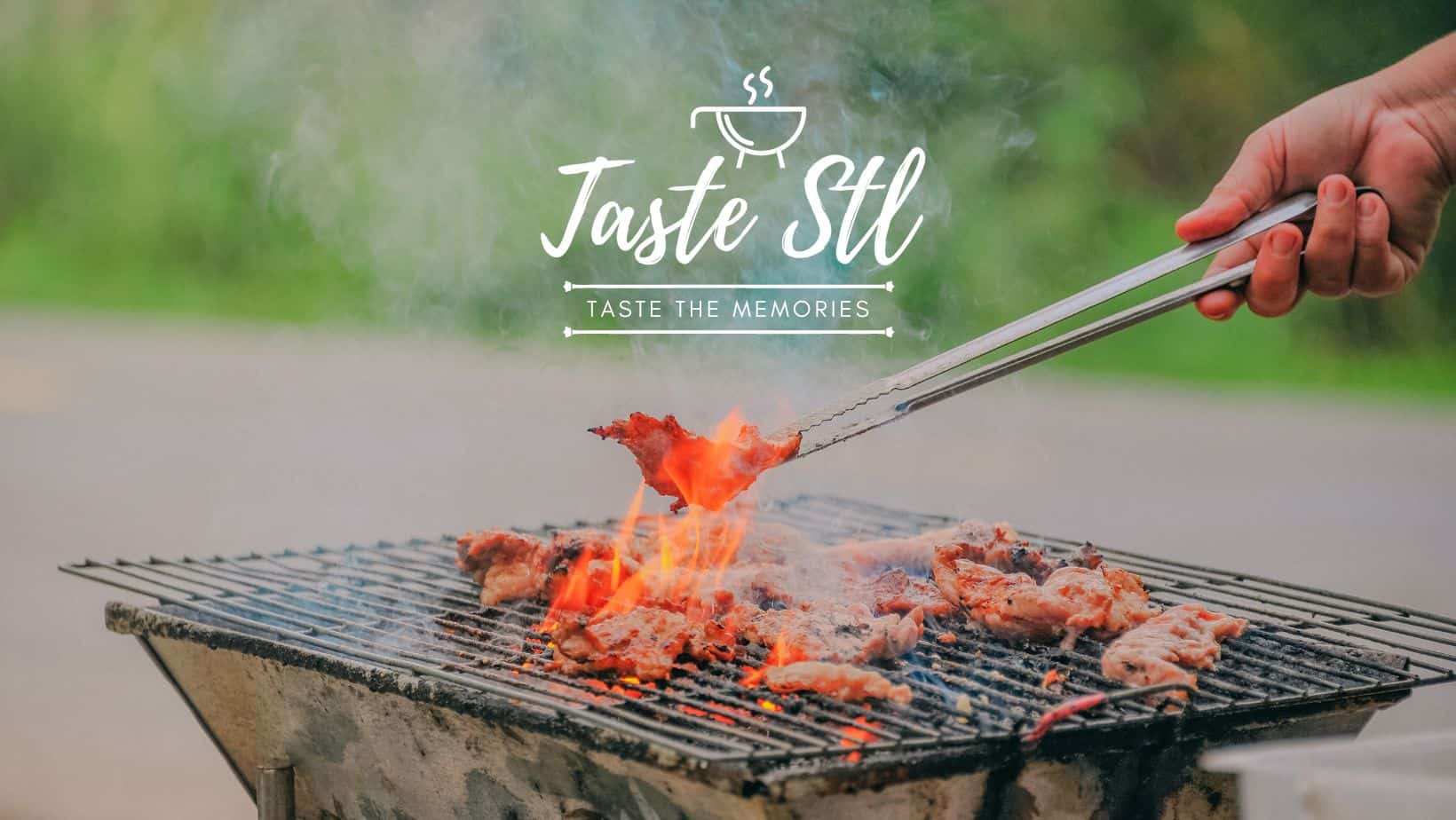If you're looking for a natural and eco-friendly way to improve the health of your honey bees and increase honey production, you may want to consider using clover. This small, white flower is a favorite among bees and can provide a significant boost to their overall well-being.
Before investing in clover for your hive, there are a few factors you should consider. First, it's important to ensure that your local climate and soil is suitable for growing clover. Additionally, you'll need to determine the right amount of clover to plant in order to provide adequate nutrition for your bees without overwhelming them.
If you're new to beekeeping or simply curious about the benefits of clover, you may be wondering how this flowering plant can impact honey production. Some key questions to consider include: How does clover benefit honey bees? What are the risks and benefits of using clover in your beekeeping operation? How can you ensure that your clover is organic and free from harmful chemicals or pesticides?
By exploring these questions and doing your research, you can make an informed decision about whether clover is the right choice for your honey bee operation. Whether you're a seasoned beekeeper or just starting out, the natural power of clover can be a valuable tool for boosting bee health and honey production.
10 Best Clover For Honey Bees
| # | Product Image | Product Name | Product Notes | Check Price |
|---|---|---|---|---|
|
1
|
This product is ideal for creating a honey bee friendly pasture in the South-Atlantic transitional region.
|
|
||
|
2
|
This product is ideal for improving soil quality, providing forage for livestock, and producing honey.
|
|
||
|
3
|
This product is ideal for creating a honey bee-friendly pasture in the Great Plains eco-region, covering 2000 sq. ft.
|
|
||
|
4
|
It is ideal for attracting bees and butterflies to your lawn or garden.
|
|
||
|
5
|
The product is ideal for creating a honey bee pasture blend in the Mid-West/Mid-Atlantic region.
|
|
||
|
6
|
The product is ideal for creating a honey bee habitat in the Pacific Northwest region, covering 5,000 square feet.
|
|
||
|
7
|
Ideal for attracting bees and other pollinators to your garden or field with colorful, non-GMO flowers.
|
|
||
|
8
|
The product is ideal for creating a food plot that attracts deer, turkey, waterfowl, and dove while also supporting pollinators.
|
|
||
|
9
|
The Langlang Automatic Wooden Bee Hive Kit is ideal for beekeepers looking for an upgraded auto frame comb beehive box.
|
|
||
|
10
|
This product is ideal for creating a honey bee pasture blend in the southwestern desert region.
|
|
1. Nature's Seed South-Atlantic Transitional Honey Bee Pasture Blend (1 Acre),pb-Sathb-1-A
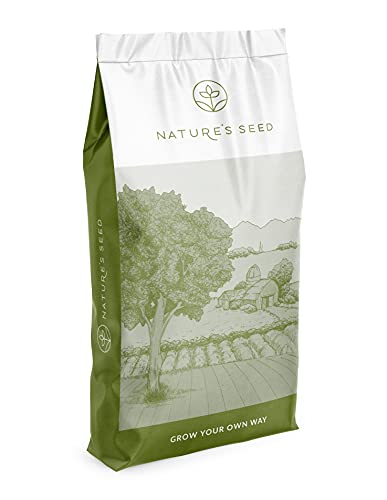
This blend of pasture seeds is a great combination of different clovers and flowers that help in producing a highly nutritious pasture. It consists of 30% Yellow Sweet Clover (Melilotus officinalis), 25% White Dutch Clover (Trifolium repens), 25% Crimson Clover (Trifolium incarnatum), 10% Sainfoin (Onobrychis viciifolia), 5% Sweet Alyssum (Lobularia maritima), and 5% Cornflower (Centaurea cyanus). Each of these components has its unique characteristics, which contribute to the overall quality of the pasture. The Yellow Sweet Clover is known for its high protein content and nitrogen-fixing properties, while the White Dutch Clover is highly palatable and drought-resistant. The Crimson Clover is also highly nutritious and helps in improving soil fertility.
This blend also includes Sainfoin, which is a highly proteinaceous plant that is ideal for livestock. Sweet Alyssum and Cornflower are used as attractants for pollinators, making this blend beneficial for both livestock and the environment. This seed blend is perfect for small and large pastures. For small pastures, the seeding rate is 1 lb./1000 ft, while for large pastures, it is 20 lbs./acre.
Overall, this seed blend is an excellent choice for those who want to produce highly nutritious pastures that are beneficial for both livestock and the environment.
- Contains a variety of clovers and flowers that contribute to the overall quality of the pasture
- Each component has unique characteristics that make it highly nutritious and beneficial for livestock
- Includes plants that are highly palatable, drought-resistant, and nitrogen-fixing
- Sainfoin is a highly proteinaceous plant that is ideal for livestock
- Includes Sweet Alyssum and Cornflower, which are used as attractants for pollinators
2. Outsidepride Yellow Sweet Clover Seed For Forage, Soil Builder, Honey Production – 10 Lbs
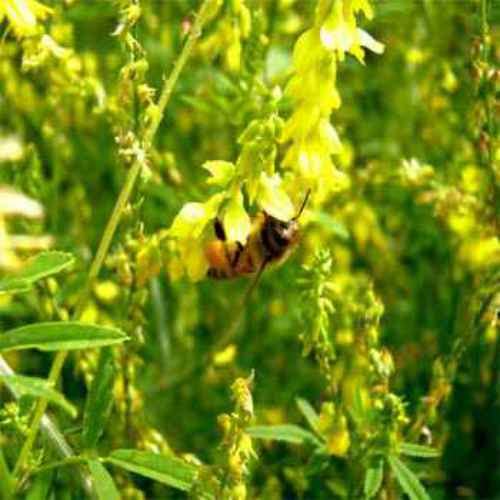
Yellow Sweet Clover, also known as Melilotus Officinalis, is a biennial plant that thrives well in full sun and performs well in almost all soil types except for acidic soil that has a pH of less than 5.5. This plant is very tolerant to frost and cold temperatures, making it a great choice for USDA Zones 3-10. Its extensive root system not only provides excellent aeration but also opens up the soil. The yellow blossoms of the plant add to its beauty, and it is a popular choice for honey bees.
Yellow Sweet Clover is usable for multiple purposes, including hay, silage, green manure, and pasture. When used for livestock, it is recommended to mix it with grasses. The plant serves as a great cover and food for birds, making it even more versatile. It is a drought-resistant and winter-hardy plant that is often produced in the southern United States, making it an ideal choice for farmers and gardeners alike.
For optimal growth, it is recommended to sow Yellow Sweet Clover seeds at a rate of 1/2 lb – 3/4 lb per 1,000 square feet or 20 to 30 lbs per acre. Overall, Yellow Sweet Clover is a versatile and hardy plant that is sure to thrive under a wide variety of conditions.
- Extensive root system that opens up soil and increases aeration
- Tolerant to frost and cold temperatures
- Beautiful yellow blossoms that attract honey bees
- Multiple uses including hay, silage, green manure, and pasture
- Great cover and food source for birds
- Drought-resistant and winter-hardy
3. Nature's Seed Great Plains Honey Bee Pasture Blend, 2000 Sq. Ft., Eco Region, (Pb-Gphb-2000-F)
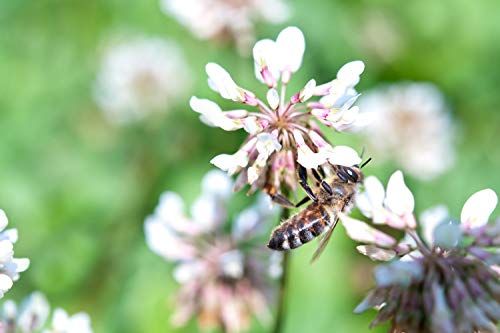
This pasture blend is specially designed to provide a healthy and diverse mix for your livestock. It contains a combination of Yellow Sweet Clover, White Dutch Clover, Alsike Clover, Crimson Clover, Sailfin, Cornflower, and Purple Prairie Clover, each comprising a certain percentage to form the perfect blend. Yellow Sweet Clover is 30%, White Dutch Clover and Alsike Clover are 20% each, Crimson Clover is 10%, Sailfin is 10%, Cornflower is 5%, and Purple Prairie Clover is 5%. This blend is perfect for pastures that require a mix of different clovers and other healthy plants.
The recommended seeding rate for small pastures is 1 lb./1000 ft., and for large pastures, the recommended seeding rate is 20 lbs./acre. This ensures that the pasture is adequately covered with the blend, allowing for healthy growth and development of the plants. With this blend, you can be assured that your livestock will have access to a diverse and healthy mix of plants that will provide them with the necessary nutrients for optimal growth and development.
- Contains a diverse mix of healthy plants
- Recommended seeding rate ensures adequate coverage of the blend
- Provides necessary nutrients for livestock growth and development
4. Mixed Clover Seed Balls- Seed Bombs For Bees & Butterflies (50)
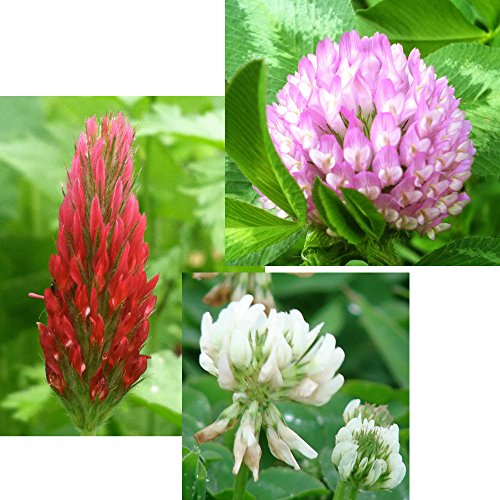
Introducing a perennial clover that is perfect for nourishing honeybees and native pollinators – this flower is a must-have for any garden enthusiast. The custom seed ball recipe uses the most gentle seed handling techniques, ensuring that the seeds are well-protected and can grow into healthy plants. The flowers come in a range of colors and can grow from 6 to 24 inches tall, making them versatile for any garden space. Planting this clover is easy and fun, and it will add nitrogen to your soil for greener, more lush gardens.
- Nourishes honeybees and native pollinators
- Custom seed ball recipe uses gentle seed handling techniques
- Range of colorful flowers
- Easy and fun to plant
- Adds nitrogen to soil for greener, more lush gardens
5. Nature's Seed Mid-West/mid-Atlantic Honey Bee Pasture Blend, 2000 Sq. Ft.
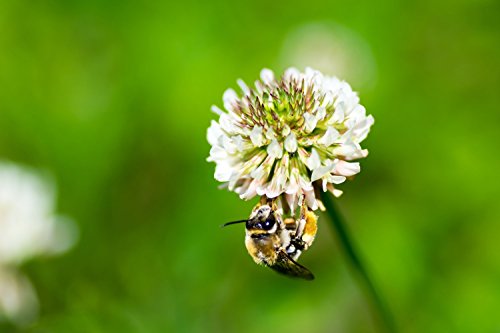
Create a lush and diverse pasture with this blend of clover, sweet clover, sailfin, sweet alyssum, and cornflower. The blend consists of 30% White Dutch Clover (Trifolium ripens), 30% Alsike Clover (Trifolium hybridism), 20% Yellow Sweet Clover (Mellitus officinalis), 10% Sailfin (Onobrychis vici folia), 5% Sweet Alyssum (Lobular maritime), and 5% Cornflower (Centaurus cyan us).
The seeding rate for small pastures is 1 lb./1000 ft. For larger pastures, it is recommended to use 20 lbs./acre for optimal results.
This blend will enhance the soil quality, provide a natural source of nitrogen, and attract pollinators to your pasture. It is suitable for areas with full sun exposure and well-drained soil. The blend is easy to establish, maintain, and will provide a long-lasting and healthy pasture for your livestock.
- Diverse blend of clover, sweet clover, sailfin, sweet alyssum, and cornflower
- Enhances soil quality and provides a natural source of nitrogen
- Attracts pollinators to the pasture
- Easy to establish and maintain
- Suitable for areas with full sun exposure and well-drained soil
- Provides a long-lasting and healthy pasture for livestock
6. Nature's Seed Pacific Northwest Honey Bee Pasture Blend, 5000 Sq. Ft.
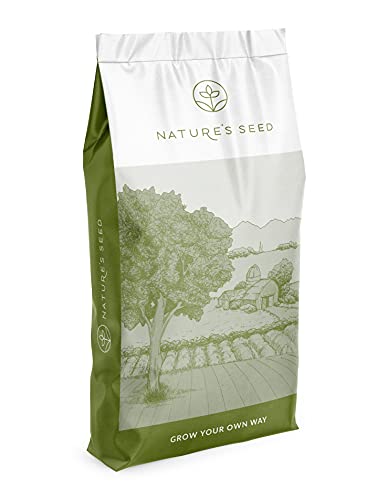
This pasture blend is a mix of different clovers and other plants, which will provide a diverse and nutritious grazing environment for livestock. The blend consists of 40% Alsike Clover (Trifolium hybridism), 20% White Dutch Clover (Trifolium ripens), 20% Yellow Sweet Clover (Mellitus officinalis), 10% Sailfin (Onobrychis vici folia), 5% Lacy Phacelia (Phacelia tanacetifolia), and 5% Bluebells (Phacelia campanularia).
The Alsike Clover is a perennial clover that is tolerant of wet soils and provides good forage quality. The White Dutch Clover is also a perennial clover that is known for its ability to fix nitrogen and improve soil health. The Yellow Sweet Clover is a biennial plant that can grow up to 6 feet tall and provide good forage for livestock. The Sailfin is a perennial legume that is drought-tolerant and can grow well in poor soils. The Lacy Phacelia is an annual plant that can attract pollinators and provide good forage for livestock. The Bluebells is also an annual plant that can attract pollinators and provide good forage for livestock.
This blend is best suited for small pastures with a seeding rate of 1 lb./1000 ft. For larger pastures, a seeding rate of 20 lbs./acre is recommended.
- Provides a diverse and nutritious grazing environment for livestock
- Consists of different clovers and other plants that offer good forage quality and improve soil health
- Includes plants that can attract pollinators and provide good forage for livestock
- – Not suitable for large pastures with a seeding rate of 1 lb./1000 ft.
7. Hancock Bee Seed Mix, Non Gmo Mix Produces Colorful Pollen & Nectar Producing Flowers, 5 Lb Bag
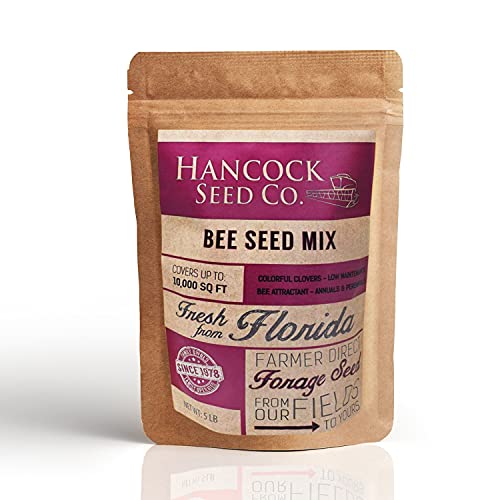
The Honey Bee Flower Seeds are specially designed to attract and provide nourishment to honey bees and bumble bees. The combination of seeds in the bag includes Dixie crimson clover, yellow sweet clover, berseem clover, white Dutch clover, and buckwheat. These are bees' favorite pollen and nectar-producing flowers, which are guaranteed to make your garden a bee haven.
The seeds require low maintenance, so you don't have to worry about constantly taking care of them. They are easy to grow and are perfect for those who are new to gardening. You can simply spread the seeds and watch them bloom into an abundant wildflower garden that covers up to 10,000 sq feet.
The Honey Bee Flower Seeds produce colorful flowers that will light up your garden and attract bees. The flowers come in beautiful yellow and white colors and produce delicious honey that both you and the bees will love. These pollinator seeds are a perfect way to beautify your garden while also helping the bee population.
The seeds are directly sourced from the farmers at Hancock Farm & Seed Co., who have been growing, harvesting, and processing top-quality seeds since 1978. As a fourth-generation family-owned and operated company, they have over 40 years of experience in providing great seeds at a reasonable price.
- Attracts and nourishes honey bees and bumble bees
- Low maintenance and easy to grow
- Covers up to 10,000 sq feet
- Produces colorful flowers that light up your garden
- Directly sourced from a reputable family-owned and operated company
8. Wildlife Wonder: Crooked Bend Food Plot Seed
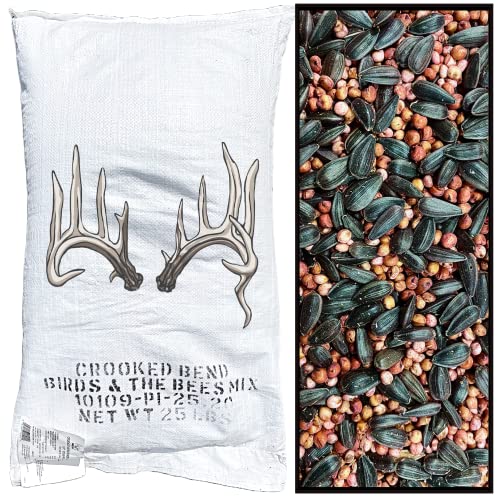
The Seed Blend is a perfect solution for all your wildlife needs. This blend contains a mix of wildlife sunflowers, crimson clover, rapeseed, forage, and grain sorghum seeds that grow into a lush foliage layer, providing the perfect habitat for birds such as turkey, pheasant, quail, duck, and goose. The blend also serves as an excellent food plot for these birds and other wildlife.
The Giant Green Screen barricades and towering natural fence barrier screening grow very fast, providing an excellent protective barrier and screening for privacy. The multiple foliage layers sprout into an incredible hunting habitat, offering a perfect cover for hunting enthusiasts. Planting sunflower seeds in the spring results in beautiful, vibrant food plots during the summer and fall.
The Fusion of flowers produced by sunflowers and crimson clovers is a natural magnet for butterfly, bumblebee, and honeybee populations, making it an excellent choice for gardeners and nature enthusiasts alike.
- The Seed Blend is perfect for wildlife enthusiasts and hunting enthusiasts alike
- The blend contains a mix of wildlife sunflowers, crimson clover, rapeseed, forage, and grain sorghum seeds for optimal growth and habitat
- The Giant Green Screen barricades and towering natural fence barrier screening grow very fast, providing an excellent protective barrier and screening for privacy
- The blend is an excellent food plot for birds and other wildlife
- The Fusion of flowers produced by sunflowers and crimson clovers attracts butterfly, bumblebee, and honeybee populations
9. Auto-Frame Wooden Beehive: Harvest Honey With Ease
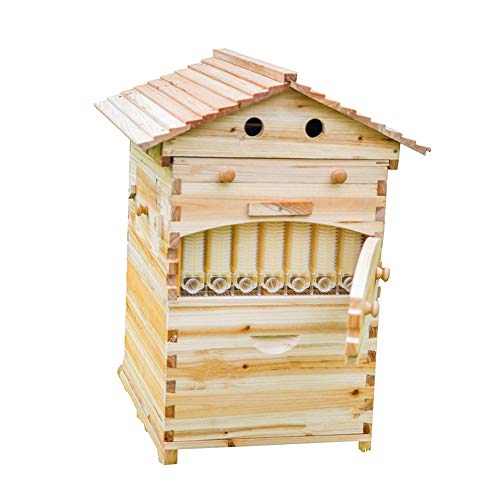
The Auto Frame and Beehive Box are perfect for new beekeepers who are looking for an easy-to-use and high-quality beekeeping kit. The Auto Frame is made with food-grade, BPA-free materials, ensuring that it is safe for both the bees and the beekeeper. The Beehive Box is crafted from high-grade fir wood and is wax coated to extend its life.
The honey auto-flowing bee hive is designed to make the extraction process less stressful for the bees and easier for the beekeeper. The beehive house kit features observation windows, allowing beekeepers to easily monitor the bees and the honey production process. When the honey is ready, simply turn the key and watch the fresh honey flow out of the hive and into your jar. Assembly is required, but it is easy to do, making this kit a great choice for new beekeepers.
This kit also makes a great gift for Father's Day or for anyone interested in beekeeping. The package includes one wooden beehive box house, 7 auto-flowing frames, 1 metal key, 7 honey tubes, and 1 user manual.
- Made with high-quality, food-grade, and BPA-free materials
- Designed to make the extraction process less stressful for bees and easier for beekeepers
- Features observation windows for easy monitoring of bees and honey production
- Easy to assemble, making it a great choice for new beekeepers
- Makes a great gift for Father's Day or for anyone interested in beekeeping
- – No significant weaknesses were found.
10. Nature's Seed 1 Acre Southwest Desert Honey Bee Pasture Blend,pb-Swdhb-1-A
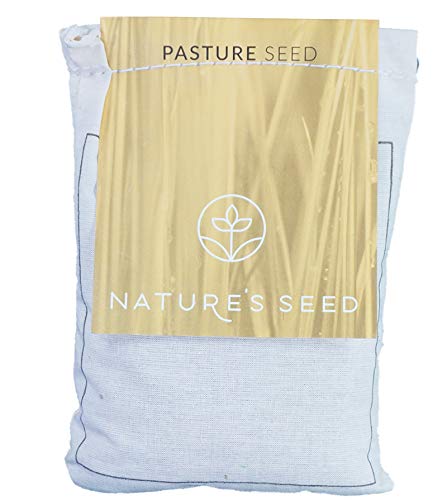
This pasture blend is a combination of different types of clover, sainfoin, lacy phacelia, and cornflower. The blend consists of 40% Yellow Sweet Clover (Melilotus officinalis), 20% Crimson Clover (Trifolium incarnatum), 20% White Dutch Clover (Trifolium repens), 10% Sainfoin (Onobrychis viciifolia), 5% Lacy Phacelia (Phacelia tanacetifolia), and 5% Cornflower (Centaurea cyanus). The Yellow Sweet Clover is a great source of nectar for bees and is also a good forage for livestock. Crimson Clover is an excellent source of protein for grazing animals. White Dutch Clover is a low-growing, nitrogen-fixing legume that helps improve soil health. Sainfoin is a drought-resistant forage that is high in protein and minerals. Lacy Phacelia is a beneficial plant that attracts pollinators and improves soil health. Cornflower is an attractive plant that also provides nectar for bees.
This blend is suitable for small pastures with a seeding rate of 1 lb./1000 ft. and large pastures with a seeding rate of 20 lbs./acre. The blend is a great option for farmers who want to improve their pasture's soil health, attract pollinators, and provide a nutritious forage for their livestock. This blend also adds diversity to the pasture and enhances its aesthetic value.
- Contains a variety of beneficial plants that improve soil health and attract pollinators
- Provides a nutritious forage for livestock
- Suitable for both small and large pastures
Best Clover For Honey Bees FAQs
Can clover be used as a natural alternative to conventional beekeeping practices?
Clover can be used as a natural alternative to conventional beekeeping practices. Clover is a flowering plant that is rich in nectar, making it an attractive food source for bees. By planting clover in the vicinity of beehives, beekeepers can ensure that their bees have a natural and abundant source of food. This can help to reduce the need for artificial feeding, as well as the use of pesticides and other chemicals that can harm bees and their habitats.
Clover can also be used to improve the health of bee colonies. The plant contains antioxidants and other nutrients that can help to boost the immune system of bees, making them more resistant to disease and other threats. Additionally, clover can help to increase the diversity of the local ecosystem, providing a home for other pollinators and beneficial insects.
Overall, using clover as a natural alternative to conventional beekeeping practices can help to promote the health and well-being of bees and their habitats. By working with nature, rather than against it, beekeepers can create a sustainable and thriving ecosystem that benefits both bees and humans alike.
How does clover affect the quality and quantity of honey produced by bees?
Clover is one of the most common plants used by bees to produce honey. The presence of clover in the nectar collected by honey bees can significantly affect the quality and quantity of honey produced. The nectar of clover contains a high concentration of sugars, particularly fructose and glucose, which are the main constituents of honey. When bees collect nectar from clover, they convert it into honey by adding enzymes and reducing the water content through evaporation.
Clover honey has a light color and a mild, sweet flavor that is preferred by many people. The high sugar content of clover nectar also means that it produces a higher yield of honey per unit of nectar collected. This makes clover a popular plant for beekeepers to cultivate as it can increase their honey production significantly.
However, the quality and quantity of honey produced by bees are also influenced by other factors such as temperature, humidity, and the availability of other nectar sources. Beekeepers need to carefully manage their hives to ensure that bees have access to enough clover nectar while also providing a diverse range of nectar sources for their bees. Overall, clover plays a significant role in the production of honey by bees and is an important plant for both beekeepers and honey lovers alike.
What are the benefits of clover for honey bees?
Clover is one of the most important nectar sources for honey bees. It is a great source of pollen and nectar, which provides the bees with essential nutrients they need for survival. The clover plant is also easy to grow, making it an ideal crop for beekeepers who want to provide a reliable source of food for their bees.
One of the most significant benefits of clover for honey bees is that it helps them produce high-quality honey. Clover nectar is rich in sugars, minerals, and amino acids, which are all essential building blocks for honey production. The honey produced from clover nectar is light-colored and has a mild, sweet flavor, making it a popular choice among consumers.
Clover is also a great source of nutrition for bees during the summer months when other nectar sources are scarce. It provides the bees with a steady supply of food, which helps them build up their strength and immunity. Additionally, clover flowers bloom for an extended period, providing a consistent food source for bees throughout the season.
In summary, clover is a vital crop for honey bees, providing them with essential nutrients, helping them produce high-quality honey, and ensuring they have a reliable food source throughout the season. For beekeepers, planting clover is an excellent way to support the health and wellbeing of their honey bee colonies.
What are the best methods for planting and maintaining clover for honey bees?
Clover is one of the best pollen and nectar sources for honey bees. Planting and maintaining clover for honey bees is relatively easy, and it can provide a significant amount of nectar and pollen for the bees. Here are some of the best methods for planting and maintaining clover for honey bees.
Planting Clover:
To plant clover, you need to select a suitable site that receives enough sunlight and has well-drained soil. Ideally, the pH of the soil should be between 6.0 and 7.0. You can sow the clover seeds directly in the ground or start them indoors and transplant them later. Make sure to water the plants regularly and keep the soil moist.
Maintaining Clover:
Once the clover is established, you need to maintain it properly to ensure that it continues to provide nectar and pollen for the bees. Mow the clover regularly to keep it at a height of about four inches. This will help the clover to produce more flowers and nectar. Also, fertilize the clover with a balanced fertilizer to promote healthy growth.
Conclusion:
Planting and maintaining clover for honey bees is a great way to support the bee population and to help them thrive. With the right care and attention, clover can provide a significant amount of nectar and pollen for the bees, ensuring their health and well-being.
What types of clover are most attractive to honey bees and how do they vary in their nutritional value?
Clover is a popular forage plant that is not only attractive to honey bees but also provides them with high-quality nectar and pollen. There are several types of clover that are particularly enticing to bees, such as red clover, white clover, and alsike clover.
Red clover is a biennial plant that produces large, spherical, pink or purple flowers. It blooms in early summer and is a top choice for honey bees because it produces a lot of nectar and pollen. The nectar from red clover is low in sugar content but high in protein, making it a valuable food source for bees.
White clover is a perennial plant that produces small, white flowers. It blooms throughout the summer and fall, making it an excellent source of food for bees throughout the year. White clover produces a lot of nectar, which has a high sugar content and is rich in amino acids and vitamins.
Alsike clover is a biennial plant that produces pink or white flowers. It blooms in mid-summer and is an important source of food for bees during this time. Alsike clover produces a lot of nectar, which is high in sugar content and protein.
In summary, red clover, white clover, and alsike clover are the most attractive types of clover for honey bees. They provide bees with high-quality nectar and pollen, which are essential for their survival and well-being. The nutritional value of these clovers varies, but they all provide bees with the necessary nutrients they need to thrive.

